Interview with Graham Jackson
About The Jane Loop | Read an Excerpt | How to Buy | Reviews
Gareth: This is Gareth Bate from Art Untangled. I have something special this week that’s different from what I normally do. I hope you enjoy it. I'm super excited to bring you an interview with my partner Graham Jackson. His first novel The Jane Loop has just been published by Cormorant Books and has now hit stores and online! I'm really proud of him. Graham and I have been together for 15 years. I really LOVE the book and I think it's powerful.
If you enjoy this interview and are interested in the book it would be awesome if you'd buy the book. It would make a great gift too. The easiest way is to get it on Chapters.ca and Amazon.ca. In Toronto it can be bought or ordered from Glad Day, BookCity, Another Story, The Spacing Store at 401 Richmond, Ben McNally Books, or Indigo/Chapters.
Sharing on social media? Use the hashtag #janeloop
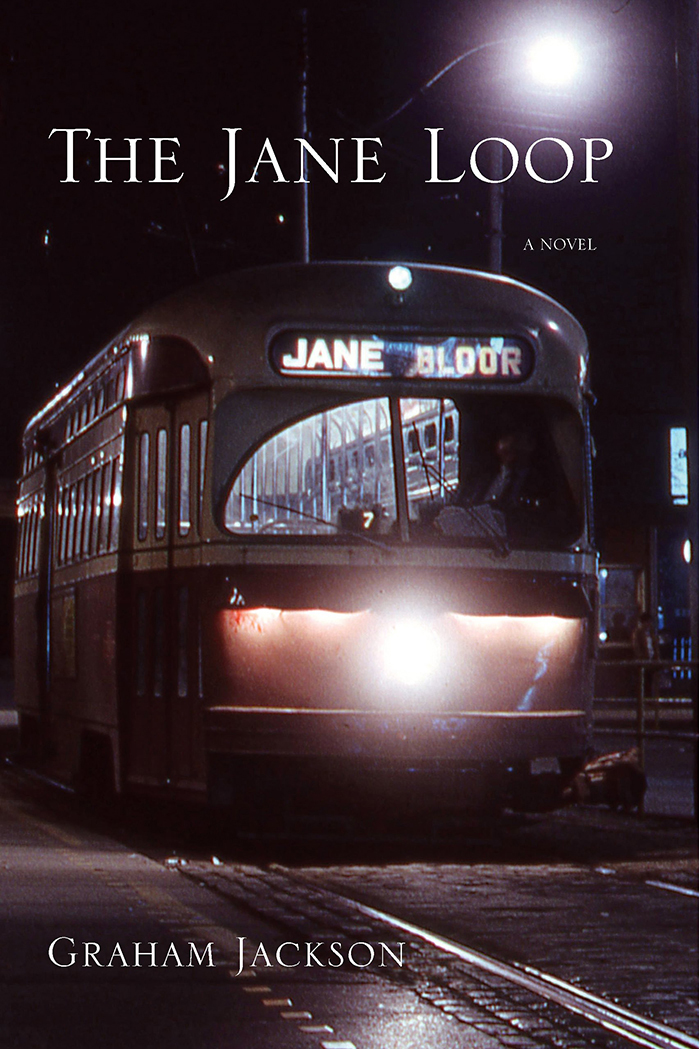
Cover designed by Angel Guerra.
Introduction
Gareth: The novel, set in Toronto in the early 1960s, is titled The Jane Loop. The main metaphor is the Loop itself, a terminus at Bloor and Jane Streets where suburban buses once connected with streetcars heading downtown. It functions as an important transition point and the bridge to adulthood for the protagonist seventeen-year-old Neil Bennett.
At the start of the novel, Neil is enjoying his summer break from high school. But it's not exactly a quiet time in suburbia. A series of break-ins by an unknown vigilante is exposing the secrets and transgressions of the Bennetts' neighbours. Neil's father, a respected civil servant in public, is back to playing his old sadistic pranks on Neil at home. The story follows Neil as he comes to terms with these frightening events, but it also shows him exploring his newly uncovered gay feelings with the help of a mysterious bread-delivery man as well as his aunt Sylvia who arrives for a visit from Los Angeles.

I think i'm the first one to buy a copy at Book City, one of the great bookstores in Toronto. This was exciting.
Gareth: Can you briefly describe The Jane Loop novel and it’s overall themes?
Graham: Well, it’s a novel about a young man, a boy actually, a 16-going- on-17-year old boy in the suburbs of west Toronto in the early 1960s. The thing about the boy, Neil Bennett, is that he’s gay in a time when being gay was almost never talked about, certainly not by middle class people living in comfortable western suburbs. It was a subject, if spoken about at all, that was spoken about with derision. The evidence of gay life or a gay sensibility was limited to the bars, the few bars that were available, in downtown Toronto and of course the streets and shops of the inner city. Neil Bennett, my protagonist, lived some distance from these and so he was enamoured by the thought of the big city.
Gareth: So would you say that it’s a portrait of a time period?
Graham: Yes, there are lots of novels of Toronto, in earlier periods but this period, the early 60s, was a particularly special one to me. It’s when I discovered a lot of things about myself and the world, though I was almost thirteen and Neil Bennett is sixteen-seventeen. It’s still a very vivid time to me: its music, its films, its city life.
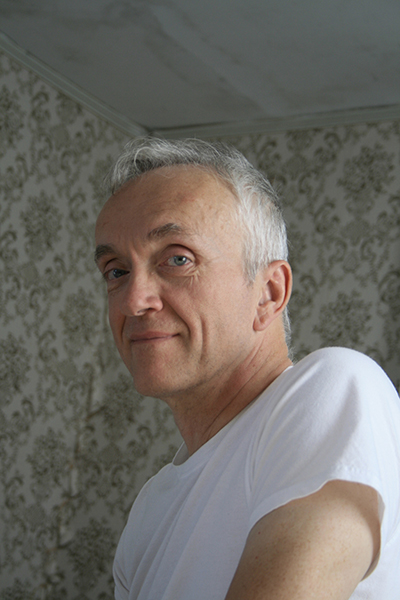
Graham Jackson. Photo: Gareth Bate.
Gareth: One of the main characters in the story is Neil’s father, a respected civil servant in public, an employee of City Hall, but in private he plays sadistic pranks on his son. How would you describe their relationship in the story?
Graham: The fact that the father plays sadistic pranks on his son tells us a lot. This is a man who feels he needs to undermine his son, frighten his son, sabotage his son. This man - Frank Bennett, isn’t really a nasty man in his private life but he sees in his son a challenge. Many fathers do. They consider their sons rivals or maybe even enemies. The things that Frank Bennett wasn’t able to accomplish he watches his son accomplish and he feels threatened by it, made smaller by it and without really thinking about it he responds in the only way he knows how and that’s through pranks, to use your word, to bring his son down to size.

The house Graham grew up in Islington a suburb of Toronto in the west end.
Gareth: Can you give an example of one of the things he does in the story?
Graham: Well one thing he does is tell Neil stories that are apt to frighten him. One of these stories is that the neighbourhood has been overrun by prowlers, thieves, people who are intent on breaking and entering and he describes seeing these people. This leaves his son uncertain about his own safety. And one evening Frank pulls a nylon stocking over his head, descends into Neil’s bedroom in the dead of night and armed with a carving knife, he waits for Neil to wake up and recognize that he’s not alone in his bedroom. Neil does wake up and of course freaks out.
Gareth: Is there any kind of autobiographical aspect to this?
Graham: Well yeah, there is definitely an autobiographical element and it extends to many parts of the story. I don’t imagine there’s a novel written that doesn’t have autobiographical elements.
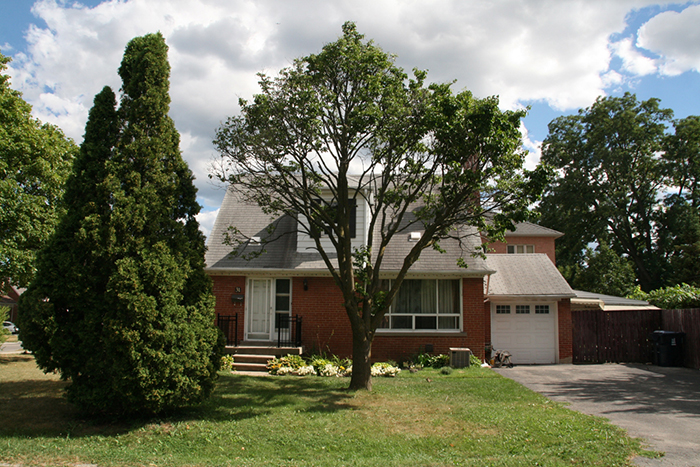
We went back to his old house and remarkably it was still standing. Many of the houses in the neighbourhood have been replaced by monster homes. Photo: Gareth Bate.
Gareth: Can you talk to me more about the father having a public persona that’s very different from his private life?
Graham: Well there’s nothing unusual about a man having a public persona - personas are always public faces. Frequently, his public face is very different from his private face, but not always of course. In Frank Bennett’s case it’s strikingly different. He has a need it seems to exercise his power at the expense of his son’s confidence and well being. He uses the scare tactics from horror movies and thrillers to catch Neil unawares…
Gareth: Why do you think the father is doing that sort of thing? What’s going on there?
Graham: That’s a very big psychological question and I’m not sure I can answer that briefly. There are many reasons he’s probably doing it. One is undoubtedly envy of his son’s academic abilities, his creative abilities. This is a man who hasn’t found a satisfying creative outlet for himself. And instead of committing himself to such a search he undermines his son’s attempts to be creative.

The back garden of Graham's childhood home.
Gareth: In addition to the father and Neil are there any other characters that are important in the story?
Graham: Well there are lots of them but three other characters stand out. The first is Neil’s mother’s sister, his Aunt Sylvia, who comes from Los Angeles and brings with her a perspective on the world that is mature, sophisticated and caring. She’s very helpful to Neil as he’s struggling with his sexual identity.
There’s Neil’s high school buddy, Tony Colero, who comes from an Italian-Canadian family and works on weekends at his father’s fruit and vegetable market. Tony’s going on a similar journey to Neil’s, only his destination is adult heterosexuality. And those parallel paths serve to give Neil a sense of inevitability about his development. Tony is also very open to hearing what Neil is going through.
The third character that is very important is the mysterious bread man, Jack Rookwood, who has dropped out of university and roamed the continent before finding himself back in Toronto in a bread truck. His particular take on the world fires Neil’s imagination and gives Neil something more to dream about and strive for.
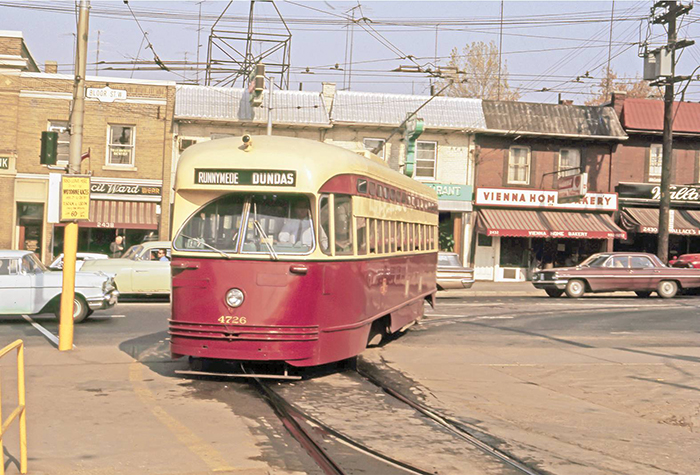
Unknown Photographer, 1963, The Jane Loop. Curtesy of chuckmantorontonostalgia.wordpress.com
Gareth: One of the metaphors in the story is the Jane Loop, a place that’s a transition point between the suburbs and the city. Can you tell me about that?
Graham: Well it was, as you’ve said a transition point. The suburban buses from all over Islington, Etobicoke and points west of the city would converge on the Jane Loop to disgorge their passengers for the waiting streetcars headed for the big city. That was some journey. It was a journey from Jane Street right over to Bloor and Yonge. Some passengers went well beyond Bloor and Yonge into the east end. There was a stop similar to the Jane Loop out by Coxwell called Luttrell. So it could be a very long journey that people engaged in when they got on the streetcar at the Jane Loop.
Gareth: What did it represent for you?
Graham: Well it’s the opportunity to get into the city, where things happened. There was always a feeling that real life was happening downtown and getting there would allow the suburban boy the opportunity to be himself in ways that the suburbs wouldn’t allow.

Gareth: The suburbs and the city of Toronto are like characters in your story. Something you always hear people say is, “Toronto used to be so boring and it’s much more interesting now.” Do you agree with that? You seem to have felt that the 60s was an exciting period in Toronto.
Graham: Well it certainly wasn’t boring to a young teenage kid. It was sort of a wonderland of people, faces, action; it provided a haven for movie theatres and record stores and book stores and all kinds of so-called seamy night life. This was greatly fascinating to a teenage kid. Everyone always used to compare it to New York and that’s like comparing chalk and cheese. These are two very different phenomena. Toronto I never found boring. It was more exciting from the late 60’s on because of the world events that contributed to an increase in it’s population. I’m thinking primarily of the Vietnam War and the draft dodgers that flooded up here and brought their alternative energy to bear on the city’s activities.
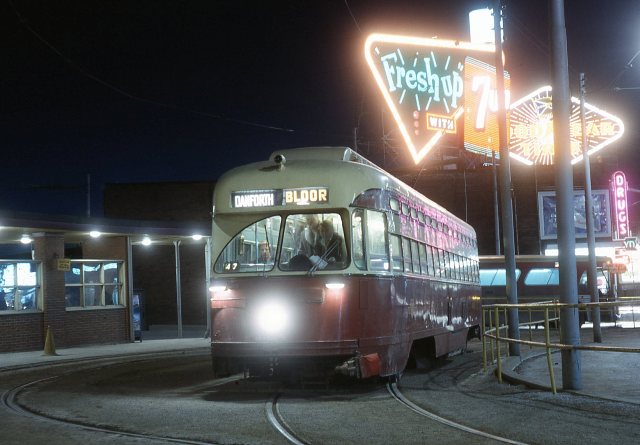
The Jane Loop.
Gareth: Even though the novel is set in the 60s I think it’s very relevant to gay teens right now. What would you say has changed for young gay people and what hasn’t?
Graham: Well I think that in many ways teens today have much less difficulty identifying what it is they’re feeling. Gay sexuality is certainly out there in the news, in the papers, in the cinema. It’s not the unspoken, never-named thing it was in the early 60s. But of course many kids today still experience great trepidation when faced with the possibility of opening up to their parents and telling them that they’re not going to have any grand kids.
That’s still a big issue for many kids and particularly those who grow up in families that are determined by so-called religious beliefs or tenets. There’s the evangelical Christian thing which is even more outspoken today. It’s kept pace with the volubility of the gay world and has become really, in my opinion, far too present. Lots of parents subscribe to these, I will call them outrageous, beliefs, and that makes it very difficult for kids to open up. And of course there’s still the fear of getting beaten up, abused, harassed by their buddies at school. The fact that being gay doesn’t come with all the baggage it used to, makes it seem more threatening, I think.
Gareth: How do you think the book could help gay teens?
Graham: I think Neil for all of his fear and trepidation, fed by this father’s behaviour, is a pretty brave guy. He outshines some of the older young men he meets in the novel in terms of staying the course, and owning his feelings and preparing himself for real relationships with other people.

After the construction of the Bloor Subway Line in 1968 the Jane Loop sat abandoned for many years until it was finally demolished. This banal office building now stands in that location. You would never know the loop had ever been there. Photo: Gareth Bate.
Gareth: You’ve had many careers and written other non-fiction books in the past but writing novels has only happened for you later in life. What would you say to people who are older and who think that it might be too late for them to start doing something really ambitious like this?
(pause)
Graham: Well, what I’d say is… do it.
Gareth: (laughs)
Graham: Well I wasted a lot of time saying, oh I can’t fit it in, I don’t have a place for it, I’m too old, I’m too this, I’m too that. It was all crap.
Gareth: (laughs)
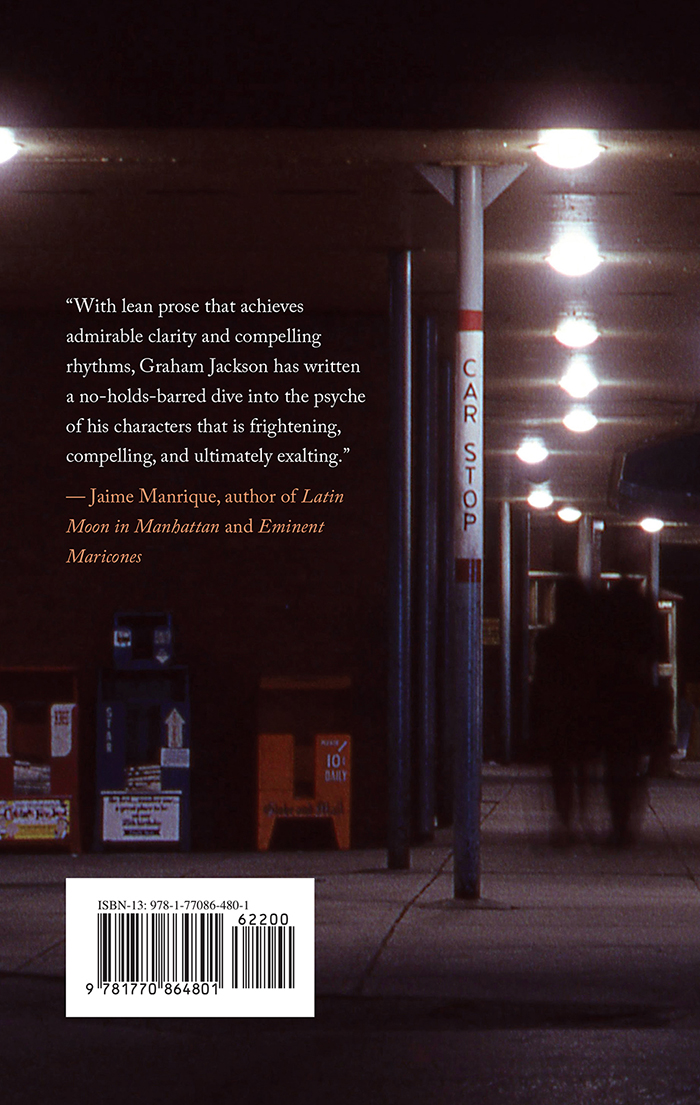
Back Cover of The Jane Loop by Graham Jackson.
Gareth: Do you have anything else that you wanted to add about the bigger themes of the story?
Graham: As you said at the beginning, I wanted to portray a time and a place and show people that these questions which are everywhere now were not everywhere then. And people were necessarily far more self-reliant than they are now in terms of dealing with these difficult questions. I think it’s also a story of how certain men, unable to deal with their homosexual feelings, create lives that are hypocritical, full of fear, masked lives, lives that keep them always on the run, always hidden. I think the novel looks at those responses to being gay as well.
Gareth: Graham Jackson, thank you very much.
Graham: Well thank you for your questions and I hope people enjoy the book.
Sharing on social media? Use the hashtag #janeloop
You can get the book at Amazon.ca! In Toronto it can be bought or ordered from Glad Day, BookCity, Another Story, The Spacing Store at 401 Richmond, Ben McNally Books, or Indigo/Chapters.
About The Jane Loop | How to Buy | Read an Excerpt | Reviews